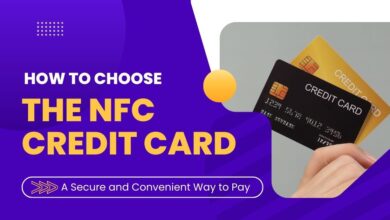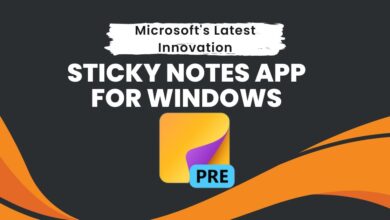Smart Spending with NFC Debit Cards: A Complete Overview for Modern Consumers

Table of Contents
What is an NFC debit card?
A contactless debit card is a special card with a technology called Radio Frequency Identification (RFID) or Near-field Communication (NFC). This technology lets people pay for things without giving their card to the person they’re paying. NFC is a term for the tech that allows two devices, like a smartphone and a payment reader, to talk to each other over a short distance. While NFC has other uses, it’s mostly used to make contactless payments easier.

How does NFC work?
NFC is a technology similar to RFID that uses electromagnetic fields to identify nearby objects. It works best when devices are close, about four inches apart, making it great for contactless payments. To make an NFC payment, you just need to bring your mobile device or tap-to-pay card near an NFC reader. The reader uses NFC technology to find your payment device, securely sends your information, and completes the purchase.
How to use NFC payments?
There are two ways to use NFC for payments:
- Tap-to-pay cards: A lot of credit and debit cards have NFC, allowing users to make purchases by simply tapping or hovering their card over the payment terminal.
- Mobile devices: You can use smartphones, tablets, and smartwatches to make contactless payments with NFC. Users have different choices, like mobile wallets and NFC payment apps.

Are NFC payments safe?
NFC payments are safe because the information sent with NFC-enabled devices is encrypted, making it difficult for hackers to read. This is done through a process called tokenization.
What are the disadvantages of using NFC debit cards?
Contactless debit cards, despite their advantages, have a few drawbacks to consider. Here are some key concerns to keep in mind.
Limited transaction amount
Customers can’t make as many transactions as they want with NFC payments. There’s a limit on how much can be spent in each transaction, and this limit varies depending on the country and bank.
Expensive for merchants
For store owners, taking NFC payments can cost a lot because regular payment machines can’t handle NFC transactions. This means merchants need to upgrade all their equipment and devices.
Security concerns
Even though contactless payments are usually safe, there’s still a chance of fraud. If someone takes your card, they could use it to make small purchases without knowing your PIN.
Reliance on technology
Contactless payments depend on technology, which can be inconsistent. If the payment terminal is not functioning correctly, you might have trouble finishing your transaction.
Despite their drawbacks, many people still prefer to use contactless debit cards because they are convenient and offer security features.
What is the difference between NFC and RFID?
In simple terms, RFID and NFC are both technologies that use radio waves to send data, but they have some differences. NFC works on a single frequency at a short distance with faster data transfer and built-in security features. On the other hand, RFID operates at various frequencies, communicates over longer distances, has a slower data transfer rate, and lacks the built-in security found in NFC.
Aspect | RFID | NFC |
Frequency Range | Operates across various frequencies (LF to UHF) | Operates at a single frequency (13.56 MHz) within the HF range |
Communication Distance | Can communicate over longer distances, up to several meters | Designed for short-range communication, typically within a few centimeters |
Data Transfer Rate | Maximum transfer rate of 10 kbps | Faster data transfer rate, with a maximum of 424 kbps |
Security | Lacks built-in security features | Incorporates built-in security measures, such as encryption for data protection |
Conclusion
To sum it up, using an NFC Debit Card is a safe and easy way to pay that’s getting more popular around the world. It makes transactions faster and more efficient, and it’s got extra security features to protect against fraud. But, like anything, there are some things to think about. For businesses, accepting payments with an NFC Debit Card can be a bit costly, and there’s a limit on how much you can spend in one go, depending on where you are and which bank you use. Also, sometimes the technology behind it can act up. Still, because of the convenience and extra security, lots of people really like using NFC Debit Cards to pay.
You Might Also Like To Read
Discover the Exciting New Features of iOS 17.3 Arriving Next Week.
Pre-order Apple Vision Pro Now and Enhance Your Viewing Experience.
Galaxy S24 Ultra Has Been Officially Launched with mind-blowing AI features.
FAQ’s
What is an NFC Credit Card, and how does it work?
An NFC Credit Card is a type of credit card equipped with Near Field Communication technology. It allows you to make contactless payments by simply tapping the card on an NFC-enabled terminal. This technology securely transmits payment information over a short distance.
Are NFC Credit Cards safe to use?
Yes, NFC Credit Cards are generally safe. They use encryption to protect your payment information during transactions, making it difficult for unauthorized parties to access your data. Additionally, many cards employ tokenization, adding an extra layer of security.
How do I know if my credit card is NFC-enabled?
Look for the contactless symbol on your credit card – it typically resembles a series of curved lines. If you see this symbol, your card is equipped with NFC technology and can be used for contactless payments.
What is the spending limit for NFC Credit Cards?
The spending limit for NFC Credit Cards varies depending on your country and the issuing bank. It’s advisable to check with your bank to understand the specific limits associated with your card.
Can I use my NFC Credit Card for online purchases?
While NFC Credit Cards are designed for contactless, in-person transactions, they typically come with a regular chip and magnetic stripe for traditional card payments. If your card has these features, you can use it for online purchases where credit cards are accepted.




